Effects of Rare Earth Ce on the Brazing Performance of High Energy Mechanical Milling Cu-Based Alloy Powder
Abstract
:1. Introduction
2. Experimental
3. Results and Discussion
3.1. As-Milled Cu-Based Alloy Powder
3.2. Transverse Rupture Strength of Cu-Based Alloy
3.3. Microstructure of Brazing Layer
3.4. Climbing Height of the Cu-Based Alloy
3.5. Wear Characteristics of Brazed Diamonds
4. Conclusions
- (1)
- The average particle sizes of the milled Cu-based alloy powders decreased with the increase of milling time. When the milling speed was 200 r/min and the milling time was 20 h, the particle size of the powders reduced significantly to 1 μm, and particle size distribution became more uniform. It was helpful to improve the specific surface areas and sintering activity of Cu-based alloy powders.
- (2)
- The transverse rupture strength was increased with the increase of Ce content. The transverse rupture strength reached the maximum value 475 MPa when the addition of Ce was 0.75 wt %. Rare earth Ce could improve the densification and ductility of the specimen; the fracture surface consisted of many obvious dimples and the micro-pores disappeared.
- (3)
- The addition of rare earth Ce could promote the refinement of Cu6Sn5 and CuTi2 grains in the brazing layer, which effectively reduced the formation and propagation of cracks. Rare earth Ce effectively increased the wettability of the Cu-based alloy and formed a massive support profile; it was beneficial to make it harder for the diamond grits to be pulled out from the matrix.
- (4)
- The diamonds brazed with Cu-based alloy containing 0.75 wt % Ce mainly suffered integrity, micro-fracture, fracture and rubdown; pull-out of the diamond could not happen easily due to the strong adhesion between the diamonds and Cu-based alloy. The milled Cu-based alloy powder containing 0.75 wt % Ce has great potential for preparation of diamond tools.
Author Contributions
Funding
Acknowledgments
Conflicts of Interest
References
- Sung, J.C.; Sung, M. The brazing of diamond. Int. J. Refract. Met. Hard Mater. 2009, 27, 382–393. [Google Scholar] [CrossRef]
- Chattopadhyay, A.K.; Chollet, L.; Hintermann, H.E. On performance of brazed bonded monolayer diamond grinding wheel. CIRP Ann. Manuf. Technol. 1991, 40, 347–350. [Google Scholar] [CrossRef]
- Sun, B.J.; Xiao, B.; Liu, S.X. Microstructure and performance of diamond abrasive grains brazed in mesh belt furnace with ammonia dissociating atmosphere. Int. J. Refract. Met. Hard Mater. 2016, 60, 154–159. [Google Scholar] [CrossRef]
- Chen, J.Y.; Shen, J.Y.; Huang, H.; Xu, X.P. Grinding characteristics in high speed grinding of engineering ceramics with brazed diamond wheel. J. Mater. Process Technol. 2010, 210, 899–906. [Google Scholar] [CrossRef]
- Lu, J.B.; Qi, W.C.; Li, Y.; Qi, F.J.; Qian, M.; Qiu, X.K. Analysis on brazed diamond joints with modified Cu-based filler alloy. Int. J. Refract. Met. Hard Mater. 2017, 67, 141–146. [Google Scholar] [CrossRef]
- Qi, W.C.; Lu, J.B.; Xu, S.; Zhong, S.J.; Wang, B.F.; Qiu, X.K. Vacuum brazing diamond grits with Cu-based or Ni-based filler metal. J. Mater. Eng. Perform. 2017, 26, 4112–4120. [Google Scholar] [CrossRef]
- Liu, S.X.; Xiao, B.; Zhang, Z.Y.; Duan, D.Z. Microstructural characterization of diamond/CBN grains steel braze joint interface using Cu-Sn-Ti active filler alloy. Int. J. Refract. Met. Hard Mater. 2016, 54, 54–59. [Google Scholar] [CrossRef]
- Long, F.; He, P.; Sekulic, D.P. Research and development of powder brazing filler metals for diamond tools: A review. Metals 2018, 8, 315. [Google Scholar] [CrossRef]
- Zhang, Z.Y.; Xiao, B.; Duan, D.Z.; Wang, B.; Liu, B.X. Investigation on the brazing mechanism and machining performance of diamond wire saw based on Cu-Sn-Ti alloy. Int. J. Refract. Met. Hard Mater. 2017, 66, 211–219. [Google Scholar] [CrossRef]
- Lavrinenko, I.A.; Evdokimov, V.A.; Melnikova, V.A.; Naidich, Y.V. Contact interaction and the wetting of graphite and diamond by melts of the Cu-Sn-Ni-Ti system. Powder Metall. Met. Ceram. 1998, 37, 512–516. [Google Scholar] [CrossRef]
- Li, C.G.; Zhou, Y.H.; Xie, Y.H.; Zhou, D.S.; Zhang, D.L. Effects of milling time and sintering temperature on structural evolution, densification behavior and properties of a W-20wt.%Cu alloy. J. Alloys Compd. 2018, 731, 537–545. [Google Scholar] [CrossRef]
- Iwaszko, J.; Zawada, A.; Lubas, M. Influence of high energy milling on structure and microstructure of asbestos-cement materials. J. Mol. Struct. 2018, 1155, 51–57. [Google Scholar] [CrossRef]
- Shpotyuk, O.; Kozdras, A.; Demchenko, P.; Shpotyuk, Y.; Bujnakova, Z.; Balaz, P. Solid-sate amorphization of As45S55 alloy induced by high energy mechanical milling. Thermochim. Acta 2016, 642, 59–66. [Google Scholar] [CrossRef]
- Noh, B.I.; Choi, J.H.; Yoon, J.W.; Jung, S.B. Effects of cerium content on wettability, microstructure and mechanical properties of Sn-Ag-Ce solder alloy. J. Alloys Compd. 2010, 499, 154–159. [Google Scholar] [CrossRef]
- Li, Z.R.; Cao, J.C.; Liu, B.; Feng, J.C. Effect of La content on microstructure evolution of 20Ag-Cu-Zn-Sn-P-La filler metals and properties of joints. Sci. Technol. Weld. Join. 2010, 15, 59–62. [Google Scholar] [CrossRef]
- Shi, Y.W.; Tian, J.; Hao, H.; Xia, Z.D.; Lei, Y.P.; Guo, F. Effects of small amount addition of rare earth Er on microstructure and property of SnAgCu solder. J. Alloys Compd. 2008, 453, 180–184. [Google Scholar] [CrossRef]
- Zhao, N.; Huang, M.L.; Zhong, Y.; Ma, H.T.; Pan, X.M. Effects of rare earth Ce addition on the microstructure, wettability and interfacial reactions of eutectic Sn-0.7Cu solder. J. Mater. Sci. Mater. Electron. 2015, 26, 345–352. [Google Scholar] [CrossRef]
- Wu, Q.P.; Luo, Z.; Deng, Z.H.; Wang, Y.; Fu, Z.Q. Fabrication of diamond whiskers by powder injection molding. Int. J. Refract. Met. Hard Mater. 2018, 74, 114–122. [Google Scholar] [CrossRef]
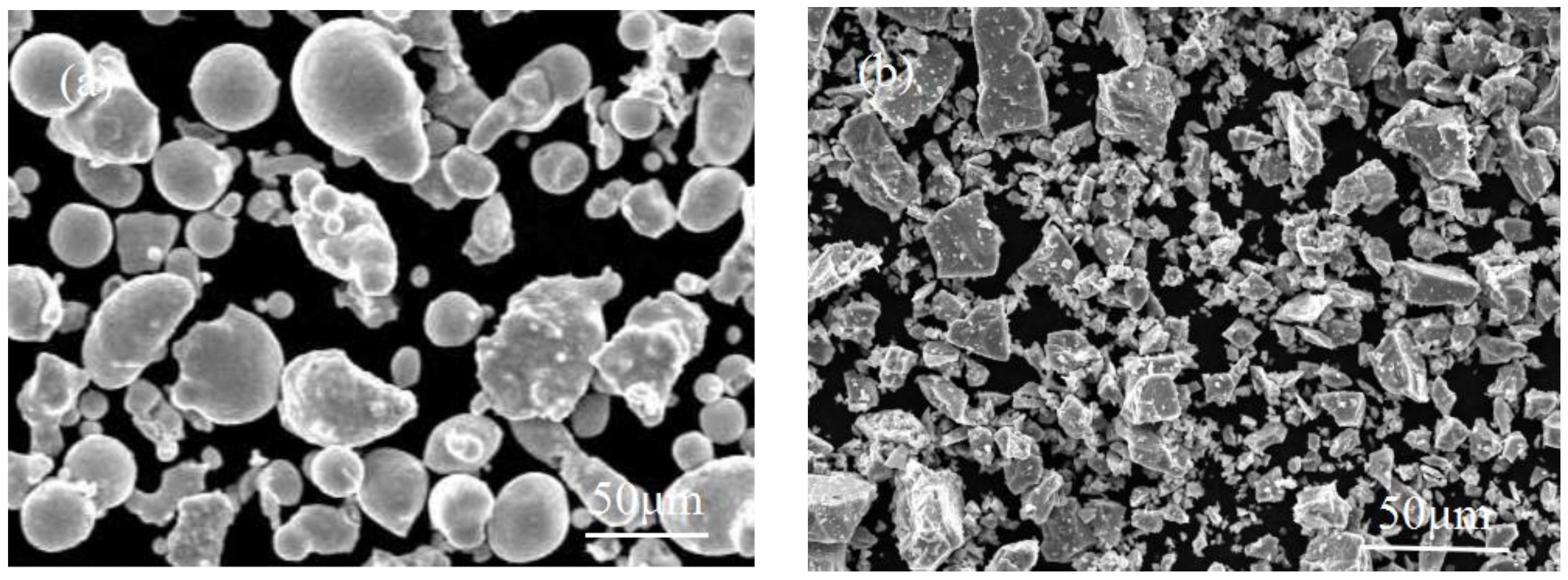

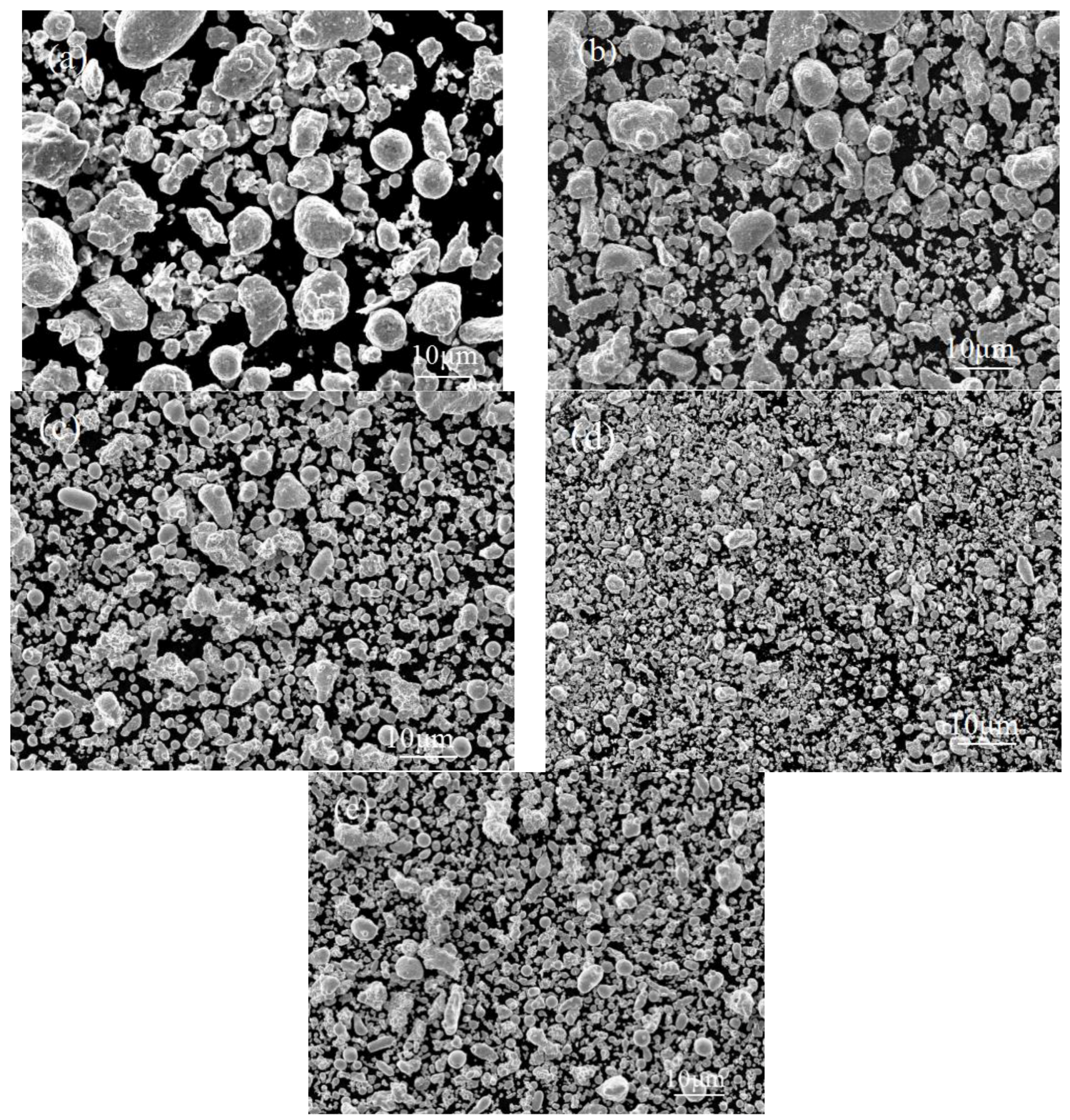

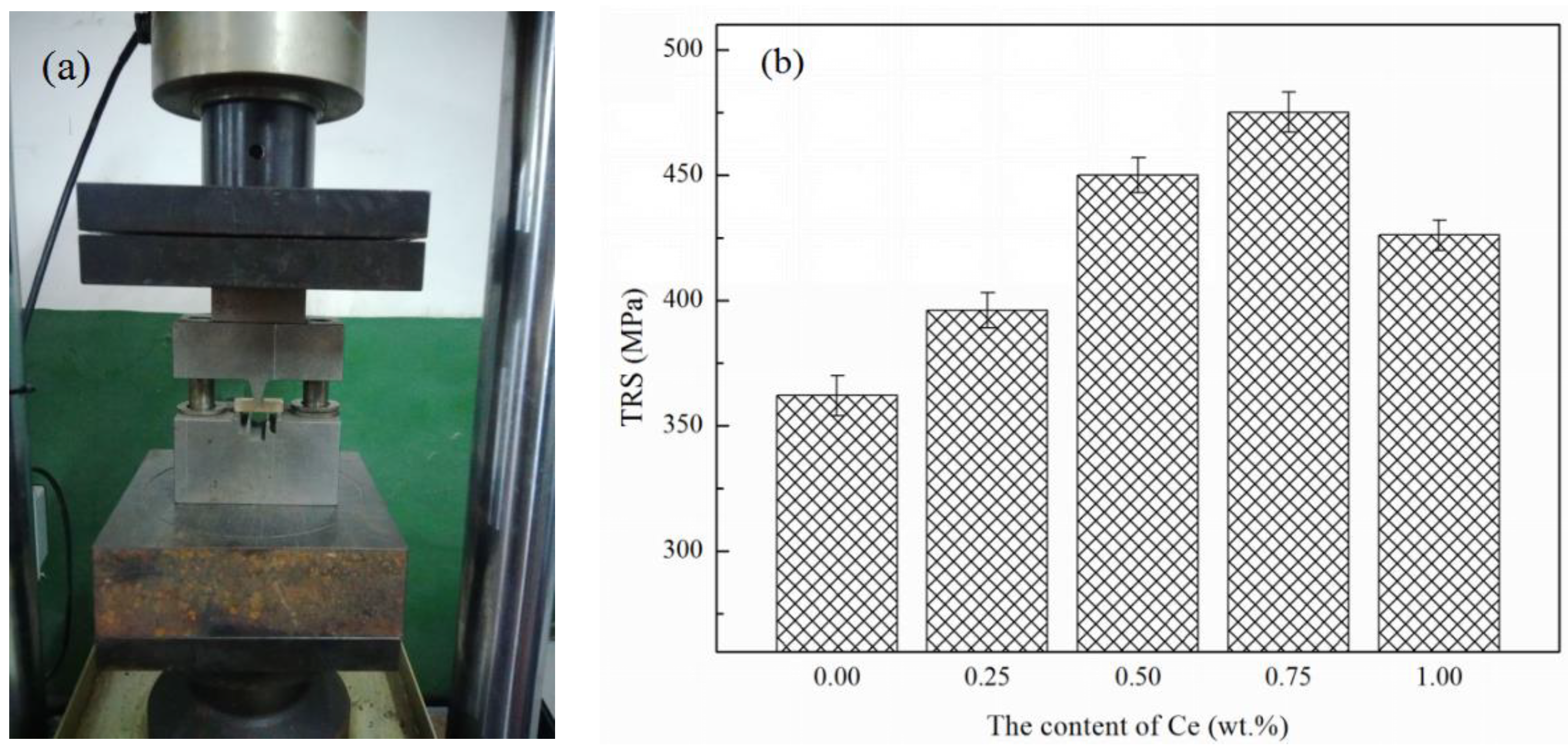
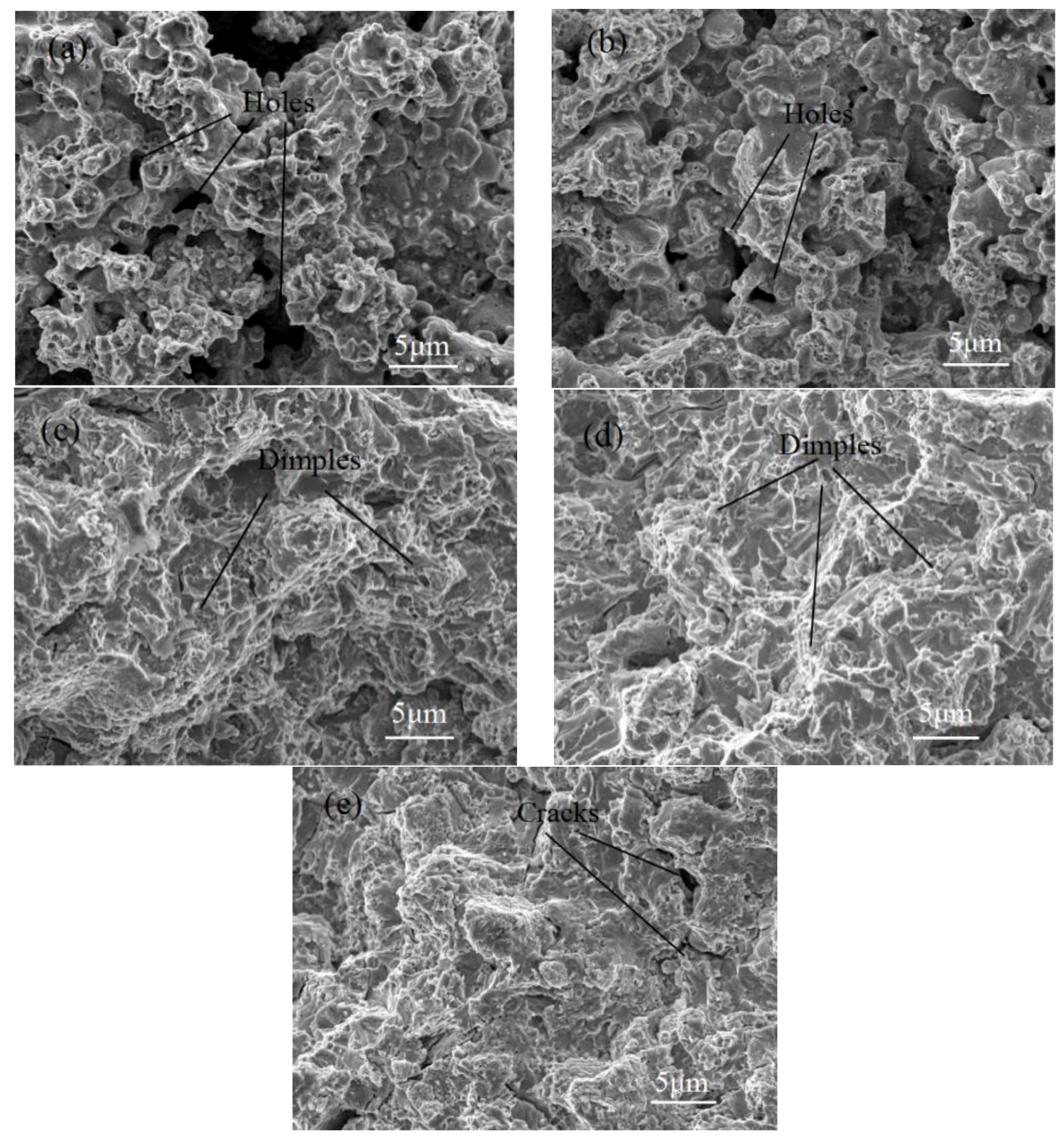
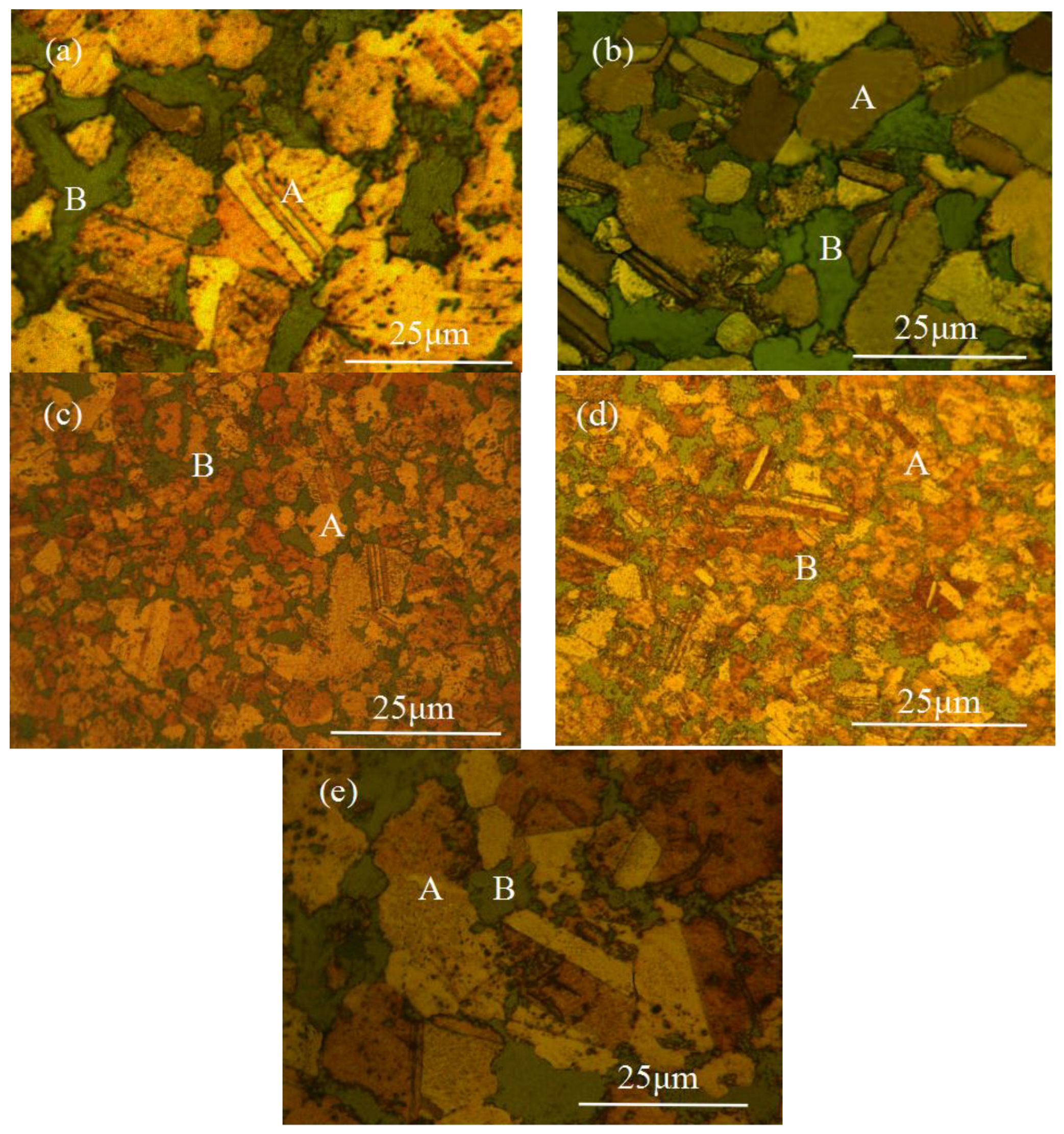
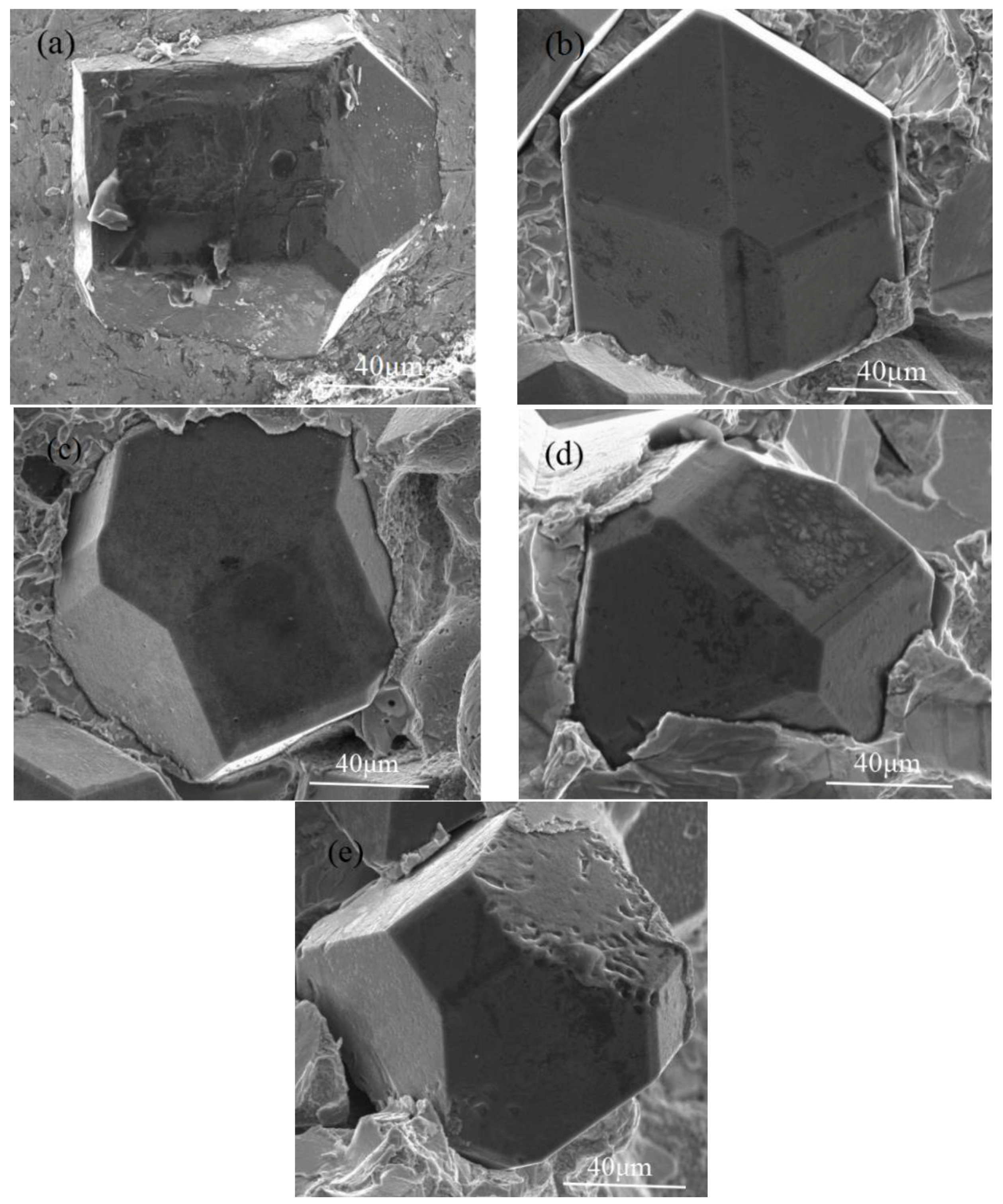
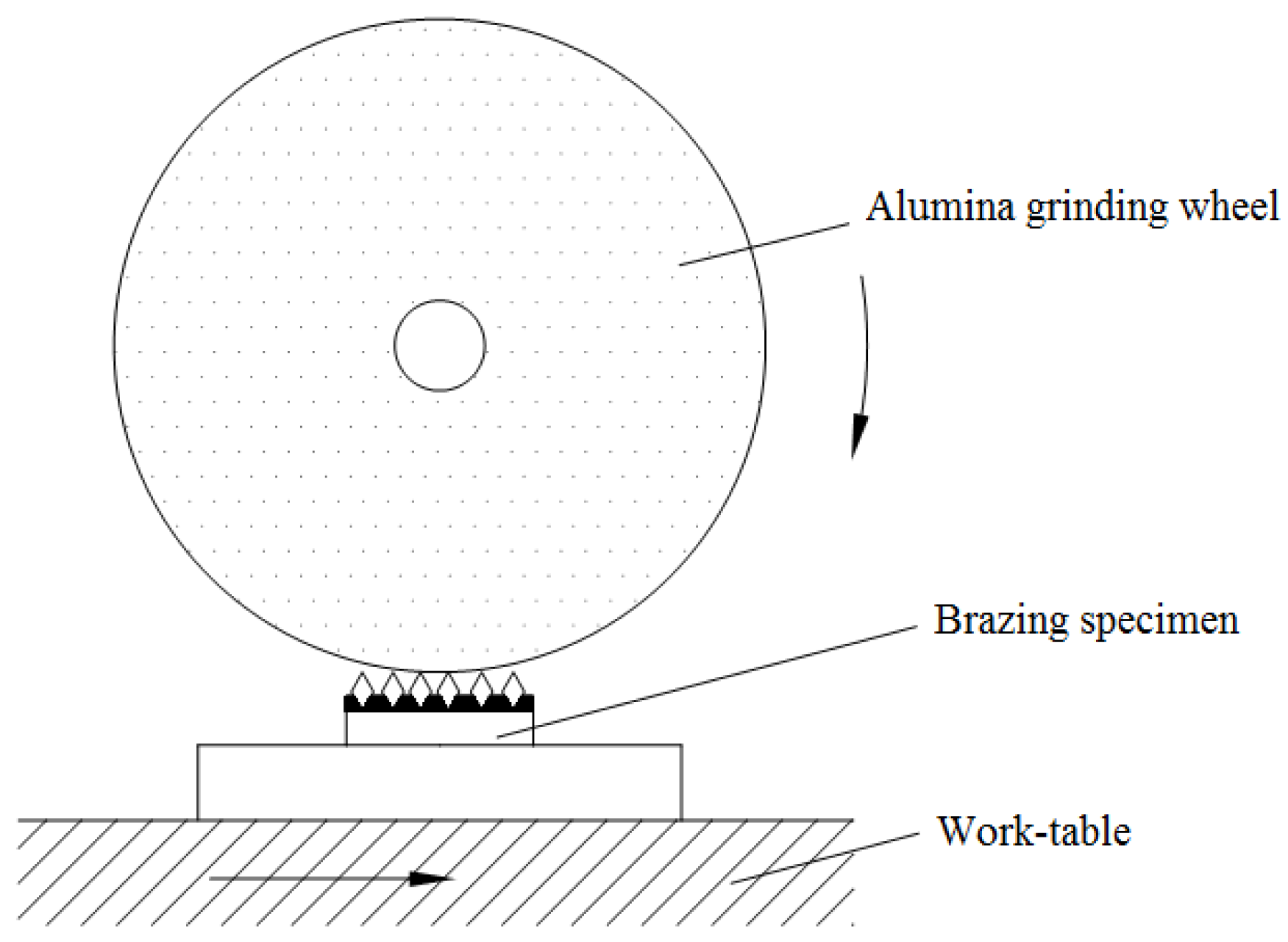

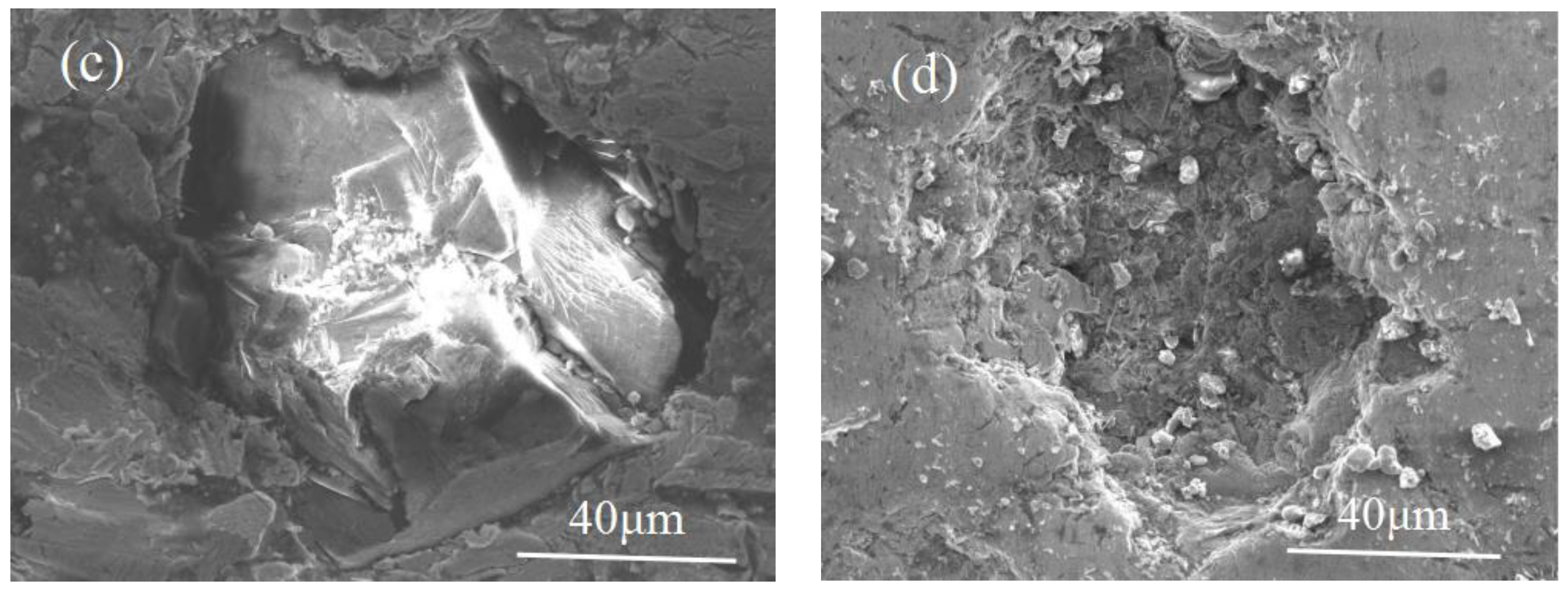

| Element | A Area | B Area | ||
|---|---|---|---|---|
| Atom (%) | Element (wt %) | Atom (%) | Element (wt %) | |
| Cu | 54.87 | 39.42 | 34.26 | 40.87 |
| Sn | 45.13 | 60.58 | - | - |
| Ti | - | - | 65.74 | 59.13 |
| Total | 100 | 100 | 100 | 100 |
© 2018 by the authors. Licensee MDPI, Basel, Switzerland. This article is an open access article distributed under the terms and conditions of the Creative Commons Attribution (CC BY) license (http://creativecommons.org/licenses/by/4.0/).
Share and Cite
Wu, Q.; Luo, Z.; Wang, Y.; Zhao, H.; Deng, Z. Effects of Rare Earth Ce on the Brazing Performance of High Energy Mechanical Milling Cu-Based Alloy Powder. Metals 2018, 8, 495. https://doi.org/10.3390/met8070495
Wu Q, Luo Z, Wang Y, Zhao H, Deng Z. Effects of Rare Earth Ce on the Brazing Performance of High Energy Mechanical Milling Cu-Based Alloy Powder. Metals. 2018; 8(7):495. https://doi.org/10.3390/met8070495
Chicago/Turabian StyleWu, Qiaoping, Zhuo Luo, Yu Wang, Heng Zhao, and Zhaohui Deng. 2018. "Effects of Rare Earth Ce on the Brazing Performance of High Energy Mechanical Milling Cu-Based Alloy Powder" Metals 8, no. 7: 495. https://doi.org/10.3390/met8070495
APA StyleWu, Q., Luo, Z., Wang, Y., Zhao, H., & Deng, Z. (2018). Effects of Rare Earth Ce on the Brazing Performance of High Energy Mechanical Milling Cu-Based Alloy Powder. Metals, 8(7), 495. https://doi.org/10.3390/met8070495




